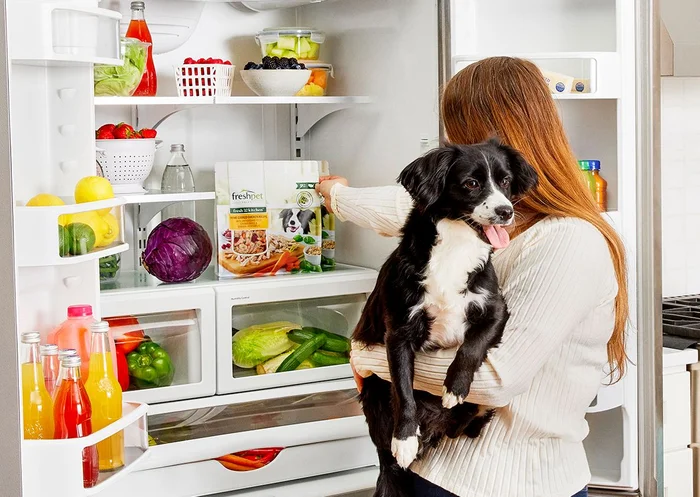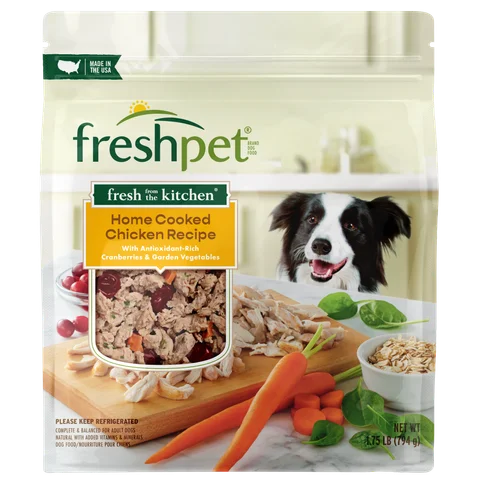
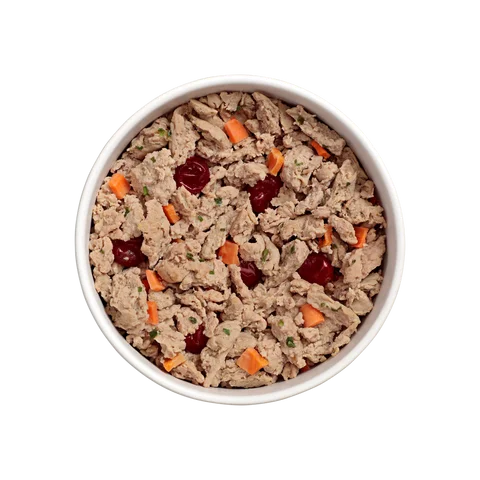
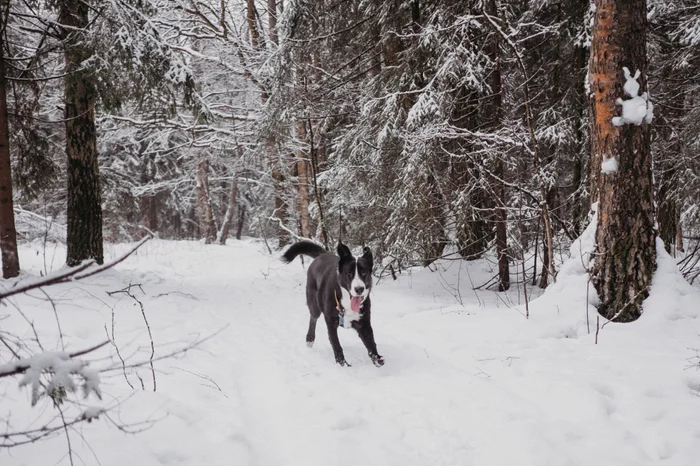
Preparing Your Dog for Cold Weather: Tips for Fall and Winter Wellness
written by Freshpet
As the crispness of fall settles in and winter approaches, it’s important to consider how the colder weather impacts your dog. Just like us, dogs are affected by temperature drops, and the transition to fall and winter presents new challenges for their health and well-being. As temperatures change, it’s essential to adjust your dog’s routine to keep them comfortable, safe, and healthy. Whether you’re dealing with snow, ice, or simply a chillier atmosphere, remember to offer your dog nourishing meals, like fresh food for dogs, to support their health throughout the colder months. Here are some helpful tips to ensure your dog stays happy and healthy this season.
As the days get shorter and temperatures drop, it’s important to adjust your dog’s exercise routine to keep them active and healthy. While some dogs love the cold weather and enjoy winter activities, others may not handle the chill as well. Here’s how to manage exercise in colder temperatures:
Shorter, More Frequent Walks: Cold weather may not be ideal for long walks, especially if your dog has short hair or small stature. Instead of one long walk, consider shorter, more frequent outings to give your dog enough exercise without overexposing them to the cold.
Indoor Play: On days when it's particularly cold or snowy, you can switch to indoor activities. Play fetch, hide and seek, or puzzle games to keep your dog mentally and physically stimulated. Some dogs may also enjoy using treadmill training as an alternative to outdoor walks.
Consider a Dog Sweater or Jacket: If your dog has short fur or is small in size, it may benefit from a sweater or coat. These protective layers can help retain body heat and prevent shivering. Look for waterproof and insulated options to keep your dog warm in wet or snowy conditions.
Your dog’s paws are especially vulnerable to the harsh conditions that often accompany winter weather. Salt, ice, snow, and cold pavement can irritate or damage their delicate paw pads. Here’s how to protect your dog’s paws during the colder months:
Boots for Protection: Dog boots are an excellent investment for dogs that spend a lot of time outside during the winter. They can help protect paws from salt, ice, and chemicals used to treat the roads. Make sure the boots fit properly and are comfortable for your dog to wear.
Clean Your Dog’s Paws: After walks, take a moment to check and clean your dog’s paws. Salt and other chemicals can irritate their paws, so gently wipe them with a damp cloth to remove any debris. You can also apply a paw balm or wax to protect their paws from cracking or drying out.
Trim Fur Between Paws: For long-haired dogs, the fur between the toes can accumulate snow and ice, leading to discomfort. Trim this fur regularly to help prevent ice balls from forming.
As the temperature drops, it’s essential to make sure your dog is staying warm indoors. Just like us, dogs can get cold if exposed to chilly environments for long periods of time.
Ensure your dog has a warm and comfortable place to sleep. A cozy bed with blankets or a heated pet mat can help your dog stay comfortable when they’re resting. Keep their sleeping area away from drafts or cold floors, and avoid placing them near windows that let in the chill.
During colder months, it’s tempting to turn up the heat, but be mindful of your dog’s comfort. Keep the home temperature at a comfortable level, and be cautious of space heaters or fireplaces. Never leave your dog unsupervised near these heating elements, as they can pose a fire hazard.
Just like humans, dogs can experience cold weather-related illnesses. Hypothermia and frostbite are real threats, particularly for dogs who spend long periods outdoors or who are sensitive to the cold. Watch for the following signs of cold weather illness:
While some dogs may shiver in cold weather, excessive or continuous shivering can be a sign that they are too cold. If your dog becomes unusually sluggish or lethargic, it could be a sign that they’re too cold or suffering from hypothermia.
Frostbite typically affects exposed areas like the nose, ears, and paws. If your dog’s paws or nose appear pale, discolored, or swollen, it’s important to seek veterinary care immediately. If your dog is excessively licking or chewing their paws, they may be trying to soothe irritated or cracked skin caused by cold or dry conditions.
Just like us, your dog’s dietary needs can change in colder weather. They may require more calories to maintain body heat, especially if they’re more active during winter outdoor activities. To ensure your dog stays healthy and energized, consider feeding them the best fresh dog food to support their nutritional needs during the colder months.
Ensure your dog is eating a balanced, nutritious diet to support their overall health. Dogs that spend time outside or engage in winter activities may need slightly more food to maintain their energy levels and body temperature.
Hydration Is Key: It’s easy to overlook hydration in the winter months because your dog may not drink as much water in the cold. Make sure your dog always has access to fresh water, as staying hydrated is essential for maintaining healthy skin, coat, and overall health.
In cold weather, your dog’s coat plays a key role in keeping them warm. Regular grooming helps to keep their fur in top condition, ensuring that they stay as warm as possible.
Brush Your Dog’s Coat: Even during the colder months, continue to brush your dog’s fur to prevent matting and ensure proper insulation. For long-haired dogs, regular brushing is particularly important to avoid tangled fur that can trap moisture.
Bathing: Be careful not to over-bathe your dog in winter. Excessive bathing can strip natural oils from their coat, leaving them vulnerable to the cold. If your dog enjoys the outdoors and gets dirty, try to limit baths to avoid dry skin during the winter months.
Some dogs, particularly those with short coats, older dogs, or dogs with certain health issues, may not be able to tolerate extreme cold for long periods. If the weather is particularly harsh, such as during heavy snow or freezing temperatures, it’s best to keep your dog inside to prevent cold-related health issues.
As the colder months approach, it’s essential to adapt your dog’s routine to keep them healthy, happy, and safe. From providing extra warmth and protection for their paws to adjusting their dog food and exercise habits, there are several ways to ensure that your dog stays comfortable throughout fall and winter. By being proactive and paying attention to their specific needs, you can help your dog enjoy the colder weather while staying protected from potential health risks.
With proper care and preparation, you and your dog can make the most of the winter months together—whether that means cozying up by the fire or taking brisk walks through the frosty air.
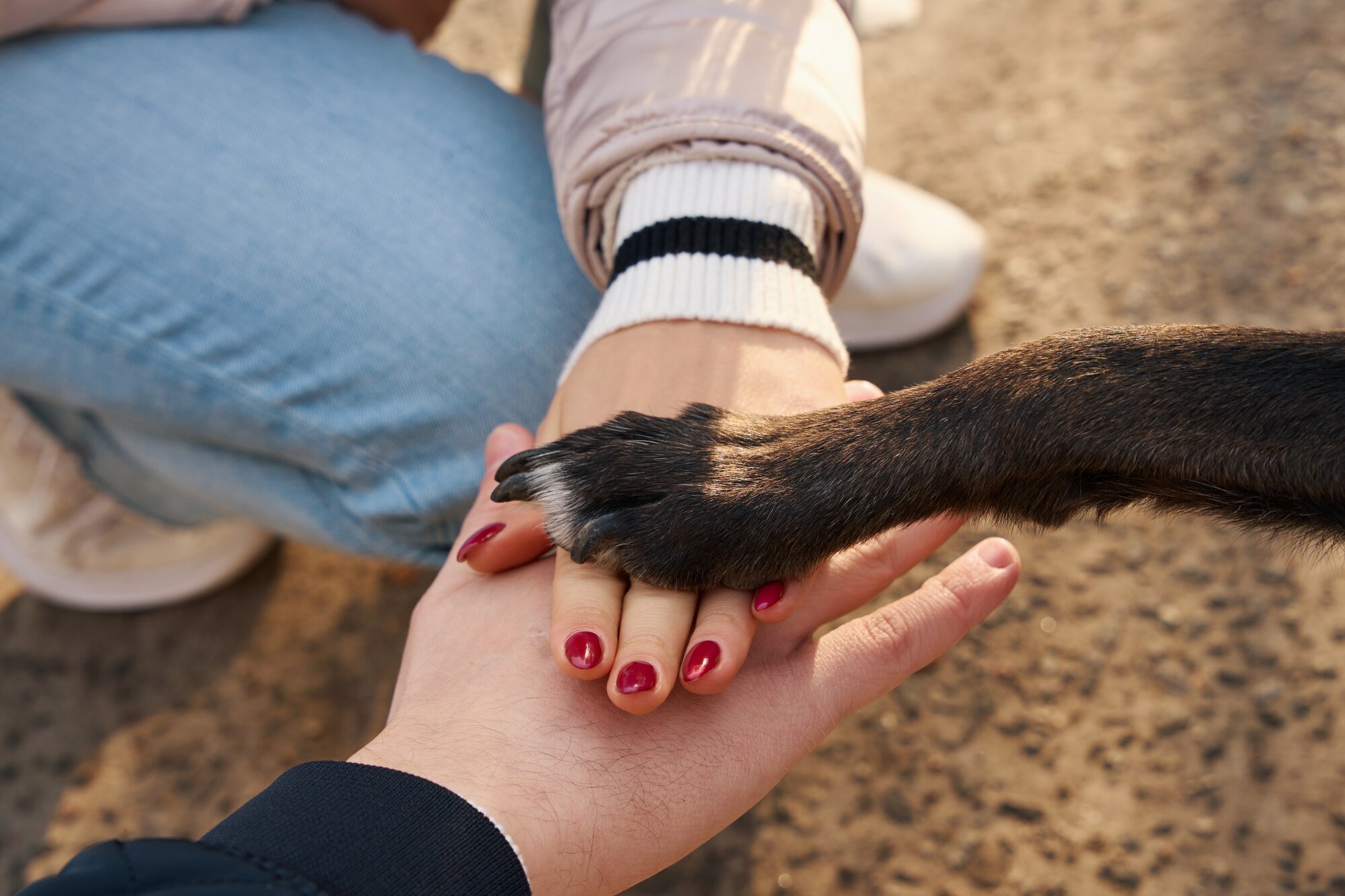
fun with pets
Learn how to easily create paw print art with your pet at home.
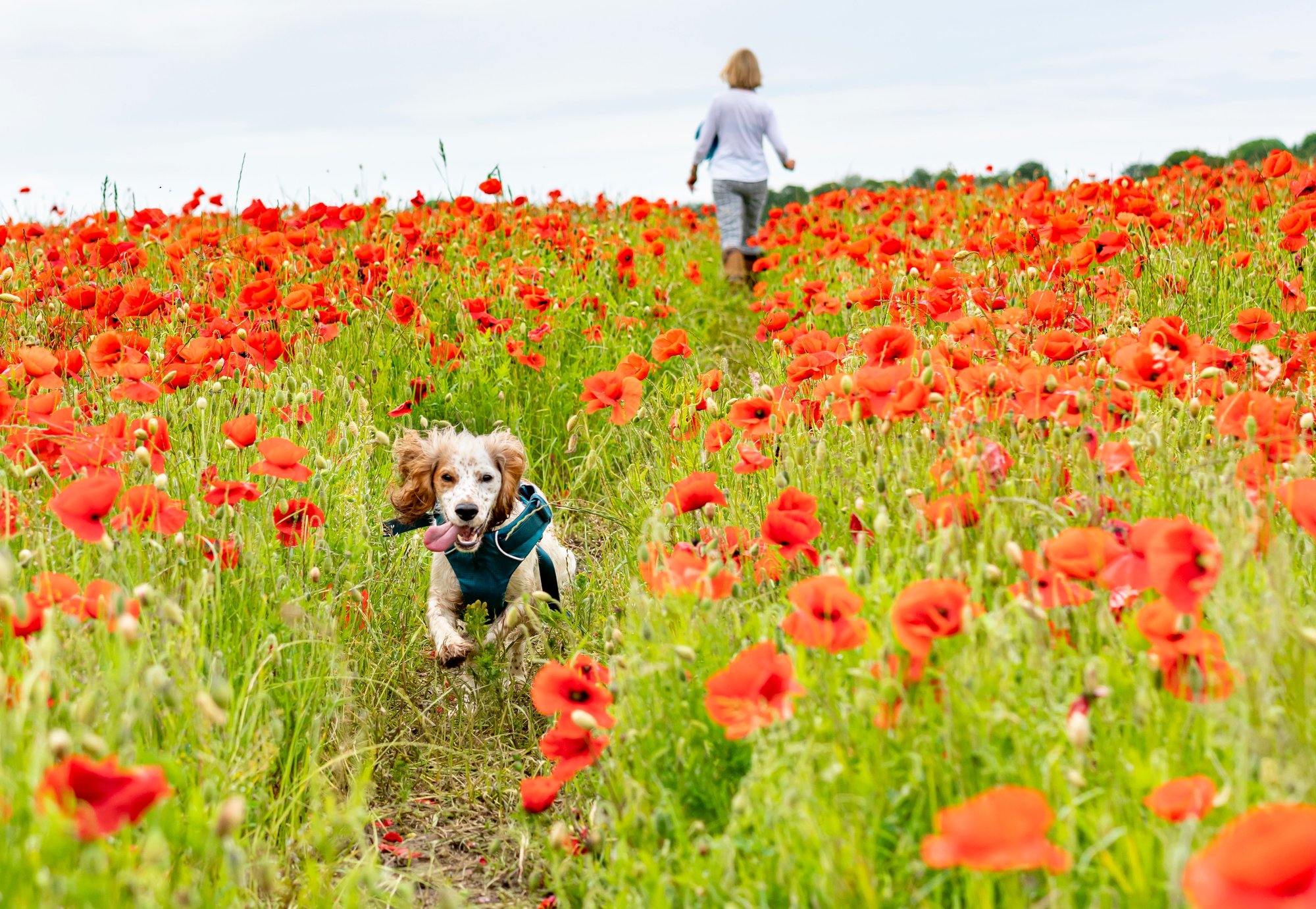
dog nutrition & feeding
Active dogs need a unique diet for energy and muscle support. Explore their nutritional needs and top recipes for vitality.
















